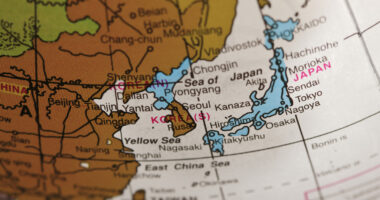Sarcoidosis Prevalence Found to Be Higher on US East Coast
Researchers analyzed healthcare claims for insured people from 2012 to 2018

About 35 out of every 100,000 people with private insurance in the U.S. are estimated to have sarcoidosis, and most disease clusters are located near urban areas on the East Coast, a new study shows.
However, most of these clusters disappeared when controlling for race, “suggesting that geographical racial variation in the United States may explain the spatial clustering of sarcoidosis prevalence,” researchers wrote in a letter to the editor.
The research letter, “The prevalence and geographic distribution of sarcoidosis in the United States,” was published in the Journal of the American Academy of Dermatology.
Sarcoidosis is characterized by an overactive immune system that results in the formation of small clumps of inflammatory cells, called granulomas, in different tissues and organs, affecting their normal functioning. The disease more commonly affects the lungs and lymph nodes, leading to symptoms such as shortness of breath and chronic coughing.
The exact cause of sarcoidosis remains unknown, but most cases begin with a triggering event — such as an allergic reaction, an infection, or exposure to certain chemicals — that sets off an abnormal immune response.
There also appears to be a genetic component to the disease, as sarcoidosis is more common in African-American people and those of Northern European descent, regardless of geographical location.
Researchers at Penn State College of Medicine and Penn State Health set out to explore the spatial distribution of sarcoidosis in the U.S., to identify groups of patients that may be clustered by geographic factors.
The team used data from the IBM MarketScan Research Databases, which comprises de-identified healthcare claims for insured people in the U.S. from 2012 to 2018 (seven years). The analysis included adults with at least two healthcare claims for sarcoidosis, at least one year apart.
In total, 37,688 people with sarcoidosis, with a mean age of 50.5 years, were identified in the analyses. This resulted in a 7-year prevalence of 35.22 people per 100,000 residents, which is lower than current estimates for sarcoidosis in the U.S. (60 per 100,000).
Looking at the regions in which sarcoidosis cases were reported, the researchers identified a total of 17 groups of patients, 13 of which were considered significant. These were all on the East Coast and mainly near urban areas.
The higher prevalence was found in West Princess Anne, in Maryland, with 69.4 cases per 100,000 people. This was followed by Jackson, Michigan; Tuscaloosa County, Alabama; and Waterford Township, Pennsylvania. In all these regions, the risk of developing sarcoidosis was over 75% higher than in the U.S. overall.
After adjusting for race, only one cluster remained — in Natrona County, Wyoming — but this region did not have a significantly greater risk of sarcoidosis compared with the rest of the U.S.
The geographical distribution of sarcoidosis suggests that it may be driven by racial, socioeconomic, and environmental characteristics, although the researchers noted that “future studies are needed to determine if there are other factors influencing incidence of sarcoidosis.”








